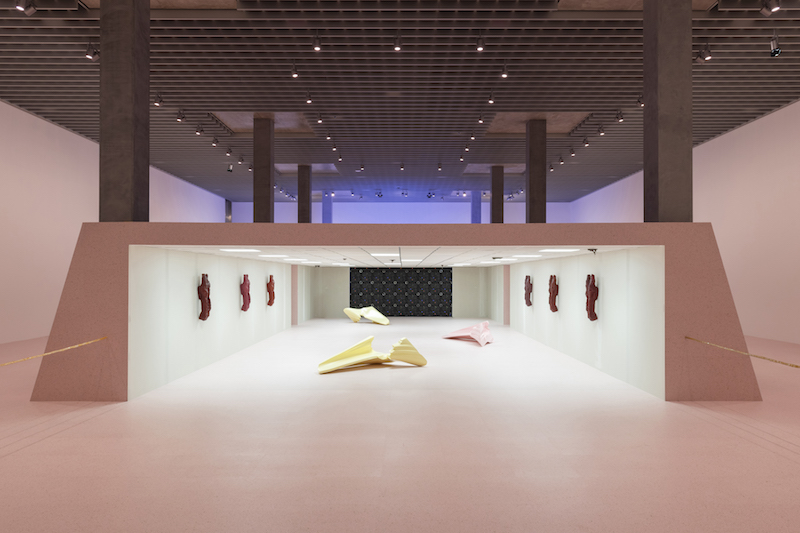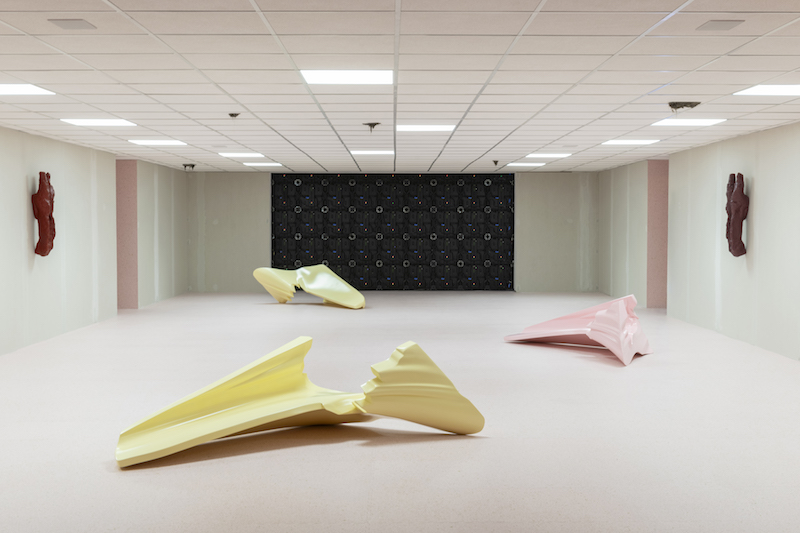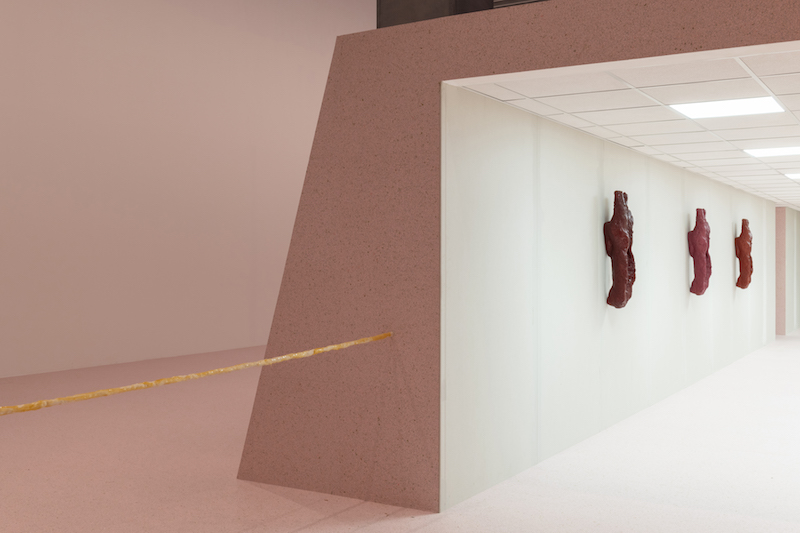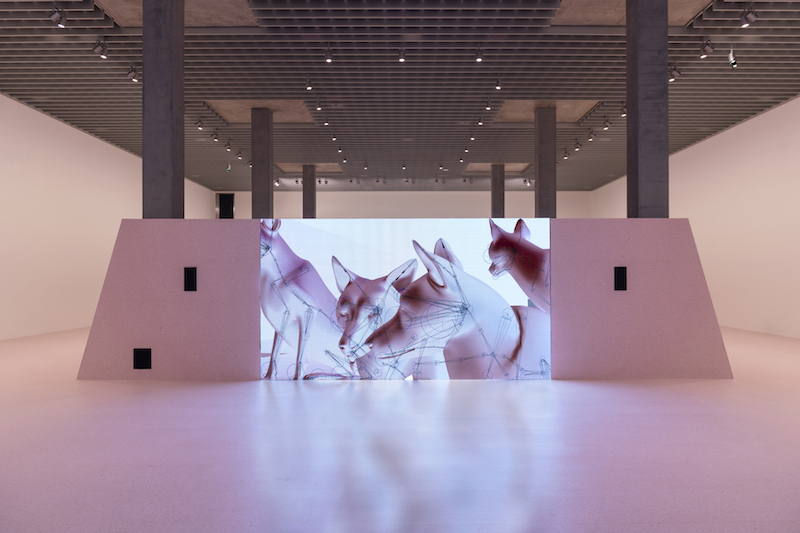by Alison Hugill // Apr. 19, 2024
At the entrance to Shahryar Nashat’s solo show at MASI Lugano, three bottles of ochre-coloured liquid rest against the wall in slumping plastic jugs. Their presence there feels like a mistake, something accidentally left over from the installation process. The otherwise ubiquitous pink hue of the exhibition walls and floors reinforces their out-of-placeness and enhances their sickly glow. Yet, the jugs—which reportedly contain litres of the artist’s own urine, in varying shades of brown and yellow—quickly reveal themselves to be the most symbolic of the show’s overall mood, and the most direct allusion to the exhibition’s title, ‘Streams of Spleen.’

Shahryar Nashat: Streams of Spleen, 2024, installation view, MASI Lugano // Photo © MASI Lugano, photography Luca Meneghel
In the 19th century, French poet Charles Baudelaire famously coined the term “spleen” to describe a feeling of resentment and deep melancholy, a kind of amorphous boredom and furious dissatisfaction stemming from nothing more than the tragedy of life itself. The spleen, an internal organ that forms an important part of our immune system by filtering “bad blood,” was historically blamed for alterations in mood. Evoking the spleen in its multiple meanings here, Nashat leads us on a visceral journey that connects physical and mental disturbances and reinterprets the perimeters of human and non-human representation.

Shahryar Nashat: Streams of Spleen, 2024, installation view, MASI Lugano // Photo © MASI Lugano, photography Luca Meneghel
‘Streams of Spleen’ is cut through with bodily references, from fluids to bones to meaty flesh. Nashat has built a site-specific structure within the exhibition space and tiled the floors with custom pale pink and pastel-speckled puzzle pieces. Accessing the show through the stairs or elevator to the museum’s basement, we have the sense that we have truly entered the belly—or bowels—of the beast. A pulsing noise fills the room and a sticky rope, like a freshly birthed umbilical cord, designates the boundaries of the structure, wherein we encounter a series of corporeal sculptural elements. What looks like the contents of a vacuum cleaner bag—hair, nail trimmings and dust clumped together—hangs here and there from the low ceiling of the space, threatening to touch us as we pass underneath. On the half-painted walls, works that look like raw carcasses mimic human rib cages on display. In a process of abjection—straddling the uneasy borders of subject and object—the body is turned inside out and revealed to be nothing more than a slab of meat. Or, perhaps, the slab of meat ascends to a more valued social status in its resemblance to human flesh. In some instinctive way, we are exposed to our own animality.

Shahryar Nashat: Streams of Spleen, 2024, installation view, MASI Lugano // Photo © MASI Lugano, photography Luca Meneghel
At the far end of the structure, a rogue technological component infiltrates the installation’s fleshy contours: the backside of the panels that form an LED wall emit a continuous flicker and hum. The soundtrack that runs through the entire space—a kind of heavy breathing that becomes more frantic, eventually dissolving into an electronic beat—is coming from a video of wolves screened on the other side of the wall. Leaving the inner structure, you can enter into the loop of ‘Warnings’ at any time, though it’s unclear if the wolf you’ll encounter there will be real or digitally-rendered. In some ways, it doesn’t matter: the content of the video itself is only a signal, a warning that can be heard throughout the show.

Shahryar Nashat: Streams of Spleen, 2024, installation view, MASI Lugano // Photo © MASI Lugano, photography Luca Meneghel
Seeing the wolves roam freely in their “natural habitat” but never sure if the wolves we are seeing are, themselves, natural or made up of data sets evoking the image of a wolf, speaks to the unsteady borders that permeate the exhibition. By initially placing humans in proximity to our own animality through his sculptural works, Nashat sets us up for a more disruptive interpretation of ‘Warnings.’ While it’s unclear what exactly we are being warned about, the overwhelming sense that we are all reducible to body parts (and replicable via AI) reignites the whims of “spleen,” in the Baudelairean sense of the term, and extends the pathos of the video’s howling lament.
Exhibition Info
MASI Lugano
Shahryar Nashat: ‘Streams of Spleen’
Exhibition: Mar. 17–Aug. 18, 2024
masilugano.ch
Piazza Bernardino Luini 6, 6900 Lugano, Switzerland, click here for map























